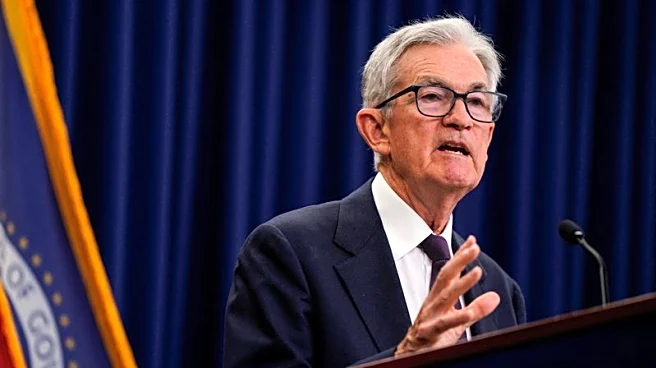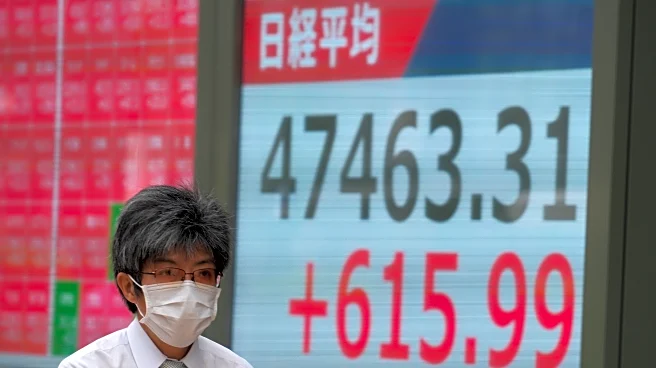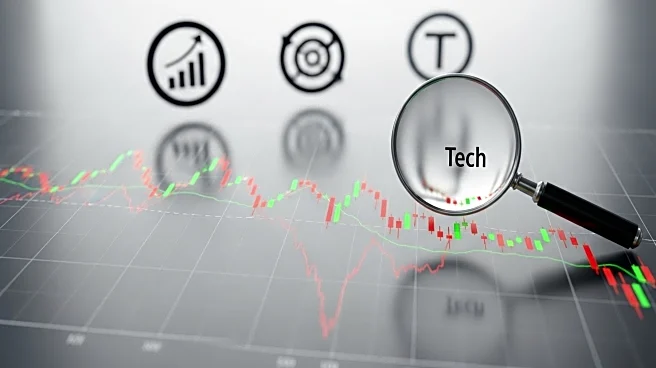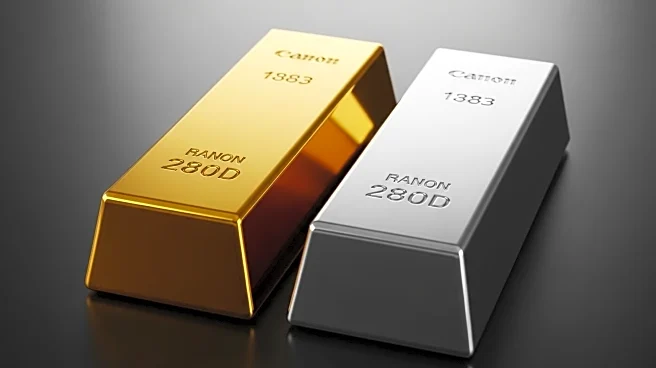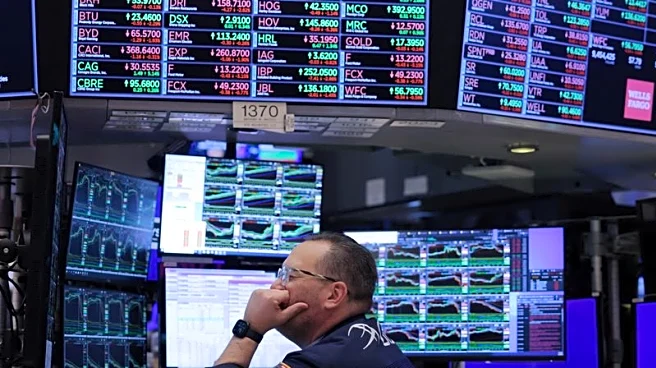What's Happening?
Gold prices surged past $4,200 per ounce for the first time, driven by expectations of further U.S. interest rate cuts and ongoing geopolitical uncertainties. The Federal Reserve Chair Jerome Powell's
comments have fueled speculation of a series of rate cuts, with traders anticipating a 25 basis-point reduction in October and another in December. This sentiment has led to a drop in the U.S. dollar against a basket of peers. Additionally, President Trump announced potential reductions in trade ties with China, following the imposition of reciprocal port fees by both nations. The prolonged U.S. government shutdown is also contributing to the economic uncertainty, affecting data flow and potentially influencing international policy decisions.
Why It's Important?
The rise in gold prices reflects broader economic and geopolitical tensions, including trade disputes between the U.S. and China and the ongoing government shutdown. Gold is traditionally viewed as a safe-haven asset during times of uncertainty and tends to perform well in low-interest rate environments. The potential rate cuts by the Federal Reserve could further bolster gold's appeal, impacting investors and financial markets. The situation underscores the fragility of current economic conditions and the reliance on monetary policy to stabilize markets. Stakeholders such as investors, policymakers, and international markets are closely monitoring these developments, which could have significant implications for global economic stability.
What's Next?
If the Federal Reserve proceeds with the anticipated rate cuts, it could lead to further depreciation of the U.S. dollar and continued strength in gold prices. The ongoing trade tensions and government shutdown may exacerbate economic uncertainties, prompting additional safe-haven investments. Market participants will be watching for any changes in U.S.-China trade relations and the resolution of the government shutdown, which could influence future economic policies and investor sentiment. The potential for gold to reach $5,000 per ounce in the medium to long term remains a possibility, contingent on these factors.
Beyond the Headlines
The current economic climate highlights the interconnectedness of global markets and the impact of U.S. monetary policy on international economies. The reliance on gold as a hedge against inflation and political instability may increase, reflecting broader concerns about economic resilience. Ethical considerations regarding trade policies and their effects on global relations are also pertinent, as nations navigate complex economic landscapes. Long-term shifts in investment strategies and currency valuations could emerge from these developments, influencing future economic frameworks.




